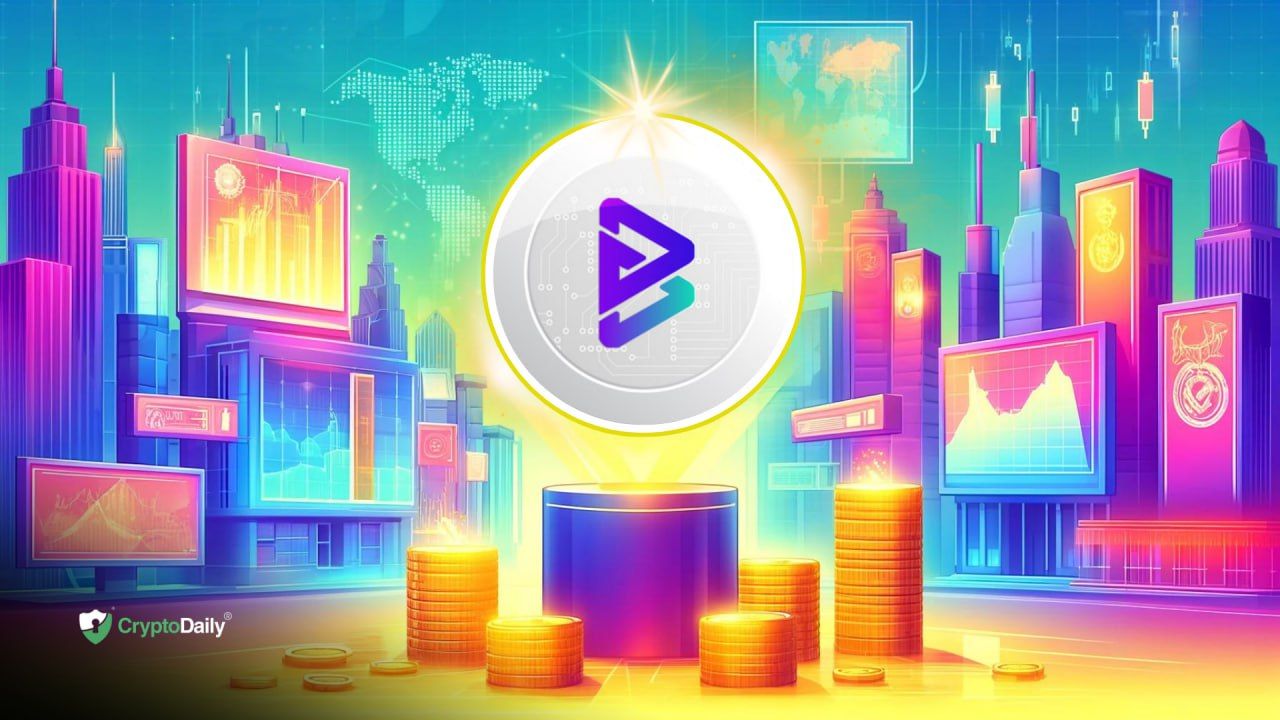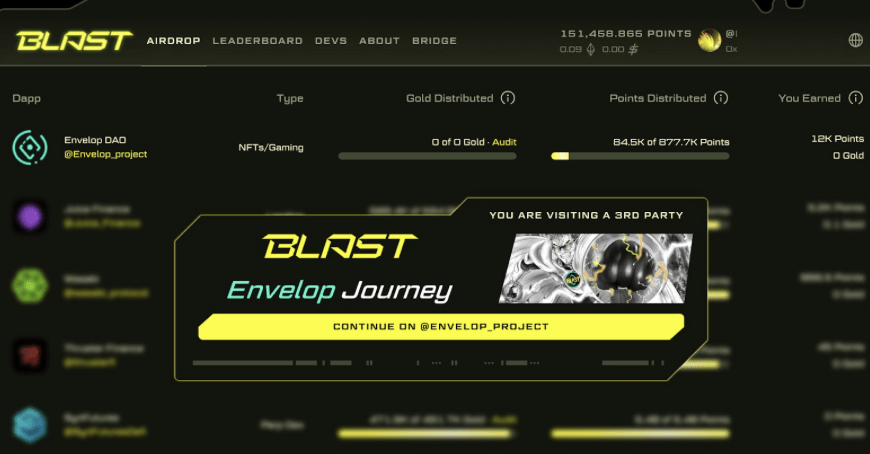Table of Contents
- Is DeFi the future?
- Where is DeFi standing today?
- The advantages of a DeFi early adopter
- What’s next for DeFi?
The DeFi (Decentralized Finance) movement is looking to offer permissionless financial services that would shift the control of wealth from banks and governments into people’s hands. Most are claiming that it wasn’t technologically possible until distributed ledger technology (blockchain) was invented. While it’s true that blockchain and smart contracts are the ideal tools for a completely transparent financial system, at the end of the day they are only... tools.
The ones who are allowing DeFi to happen are those who are choosing the decentralized way today, in its early days, when things are not perfect and fees are high. These are the early adopters of what will be the norm in the future.
Is DeFi the future?
DeFi is not Bitcoin or Ethreum or Uniswap. DeFi is every project, every early adopter, and every cryptocurrency transaction since more than a decade ago when Satoshi Nakamoto published the white paper of a “Peer to Peer Electronic Cash System”: Bitcoin. The benefit of such a system is simple: “electronic payments [...] without going through a financial institution”.
Nearly one year after its inception, the dream becomes reality: the first purchase of goods using Bitcoin happened. Laszlo Hanyecz bought two pizzas for 10,000 BTC on May 2nd, 2010. Laszlo was one of the early adopters of cryptocurrency and, while spending a ridiculous amount on pizza based on today’s market price, in the present he’s internet-famous, working as a developer, and he’s still a big believer in BTC. We can assume that 10,000 BTC was just a small part of the coins he mined during the early days.
How about the pizza company that received the 10,000 coins? Well, based on a reply on the bitcointalk forum, he sold them all for $400, a 10x profit. He could have made much more money if he would have held until today (at least 1 BTC) so history shows us that being an early adopter is not enough if you are not also a believer in the change.
Where is DeFi standing today?
There are two perspectives. Price-wise cryptocurrency overcame the bubble-effect of the 2017 hype when speculative value significantly outpaced utility value, which led to a crash in the same year. Technology-wise the blockchain ecosystem is much stronger than before, the development activity is increasing every month, and innovative projects are gaining in popularity pretty fast.
However, the way the DeFi space is changing shows us that we haven’t outpassed the early phase yet. It’s estimated that around 40 million people used cryptocurrency and the active number of users of DeFi is believed to be much lower. What’s more important, though, is the total value locked in the DeFi ecosystem which is calculated by DeFi Pulse to be $9 billion at the time of writing. That’s huge! Especially that it comes only from the early adopters. I don’t want to make any prediction, but that ‘b’ (b-illion) can transform into a ‘t’ if cryptocurrency would become mainstream.
The advantages of a DeFi early adopter
Recently, the decentralized exchange, Uniswap, launched its governance token, UNI. The token is listed on Binance and Coinbase already being traded like any other Ethereum-based token. Anyway, Uniswap chose to distribute its tokens in a unique way so they’re rewarding the early adopters of their platform by automatically allocating 400 UNI tokens to any wallet address that used the DEX before Septemeber 1st.
The exchange is live and working since 2018. The ones who chose to use, support, and promote their service during the two years of its existence are the ones who shaped the product into what it is today. The team made the right choice to allocate 100 million (10% of its total supply) to its most valuable users. The community response was great as 66 million of the tokens were already claimed in the first 24 hours. Not only that each user got to claim tokens worth of around $2,000, but they also get voting rights on deciding the platform’s future.
Similarly, but still ongoing, ONFO is distributing its tokens exclusively through network mining and early adopters (the ones using it today) are the ones to benefit from it the most. Network mining is a completely new concept where you can earn tokens just by sharing a referral code with everyone you know (your network). You don’t need any initial funds to participate. You only need a device with an internet connection to create an account and generate your referral code. Once that’s done you can distribute it through text, social posts, word of mouth, and get your tokens directly into the wallet.
ONFO token is not just a way to reward the platform’s participants. The project’s mission is to create an ecosystem fair to everyone where tokens serve as a suitable means of payment, similar to Satoshi Nakamoto’s vision. Anyway, acquiring Bitcoin or any other cryptocurrencies requires you to convert your funds into the digital asset first. Funds that will be under the risk of losing their value over time due to their volatility. ONFO chances that by designing its token into a stablecoin. The more people are joining the more tokens are being created through a coin splitting process. The mission of the project is to set its early adopters free from the limits of banks and traditional currency.
Rewarding users for participation seems to be the trend as Binance Chain exchange is doing it even for the users of its mainnet. BNB token is its native token which acts as a means of payment within the exchange ecosystem. Recently, the exchange announced that BNB staking is allowing its holders to earn interest on their funds. The funds are being locked for a minimum of seven days and it enables the owner to become one of the network’s validators.
Such a mechanism needs to be tested first. While staking on the mainnet rewards real tokens with monetary value, staking on a testnet returns test tokens with no value. In general, testnets are populated by early adopters supporting a project without the expectation of any earnings. However, Binance chose to recompense the users who are choosing to stake on their testnet with 3,000 real BNB tokens. That’s more than $80,000 in prizes. Unfortunately, the participation period ended, but early adopters had the chance to earn for themselves a good amount of tokens during the period.
What’s next for DeFi?
Today, the DeFi space is mostly populated by early adopters. Cryptocurrency and blockchain are getting traction among people of all kinds, especially those who are tech-savvy, but it’s far from becoming mainstream. However, investors and venture capitalists are already recognizing the value of DeFi projects and they want to make their best for the future. Money is coming in and some teams are choosing to reward those who are supporting their product. We’ve seen it in the past that a strong community can validate a product. Being part of one could end up in your advantage.
In any case, financial rewards are not the goal. They are just a consequence of it. The actual goal behind building and using all these DeFi projects is to separate ourselves from the central power of the existing financial system. Just by choosing the decentralized version of a financial product you are giving your vote for a decentralized future. There are and there will be things less than perfect. Maybe things won’t work for you at the first try. The key point here is not to give up, join the communities behind these projects, and use their product as intended. History shows us that one way or another, early adopters are rewarded for their time and effort!
Investment Disclaimer







